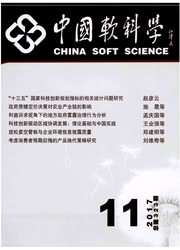

 中文摘要:
中文摘要:
本文从共生是一种普遍现象入手,对创新系统进行了新诠释,构建了基于创新单元U、共生模式M与共生环境E三要素的创新系统(S)理论,即→S=f(→U,→M,→E),提出了"供需空洞型创新系统(A)"、"企业需求拉动型创新系统(B)"、"研发机构推动型创新系统(C)"与"供需集成型创新系统(D)"的四大创新系统类型,分析了创新系统演进的两条路径A→B→D与A→C→D,并对创新系统共生体理论的适用性进行了讨论,认为该框架可概括国家创新系统、区域创新系统等不同的创新系统概念,并能解释政府介入的合理性,对实践推进有指导意义。
 英文摘要:
英文摘要:
This paper intends to present a new perspective for the innovation system(IS) from symbiosis theory.The research proposes that there are innovation units(U),symbiosis modes(M),and symbiosis environment(E) in the IS(S).The above three elements jointly decide the features and performance of IS(S),i.e.S→=f(U→,M→,E→).It also argues to divide IS into four major types,these are "no supply and demand behavior IS(A)","IS based on enterprise demand(B)","IS based on R D-driven(C)" and "integrated IS of supply and demand(D)".It analyses the evolution of two paths A → B → D and A → C → D.The research discusses the applicability of that theory,believes its framework can general explain the national IS,regional IS and the rationality of government intervention,and guide the propelling of practice.
 同期刊论文项目
同期刊论文项目
 同项目期刊论文
同项目期刊论文
 期刊信息
期刊信息
